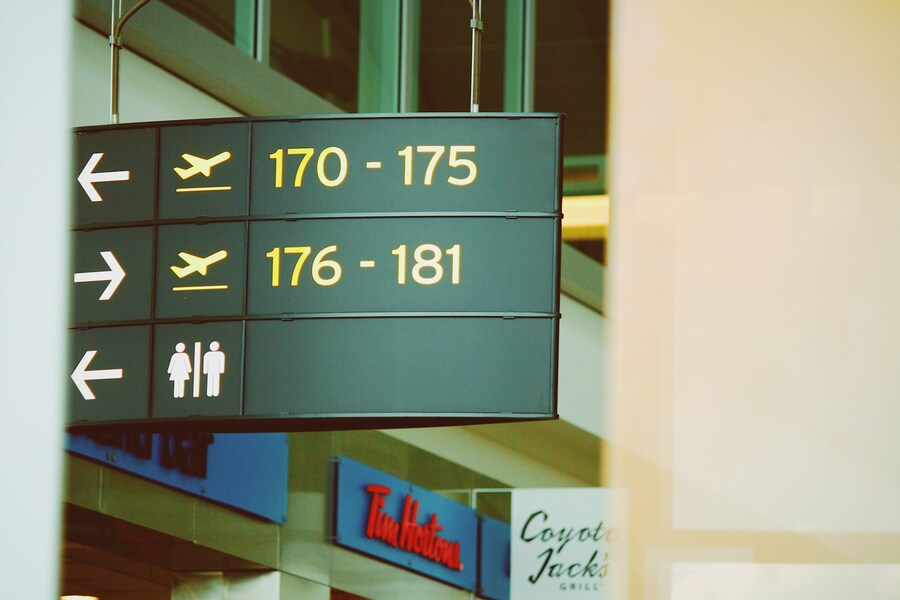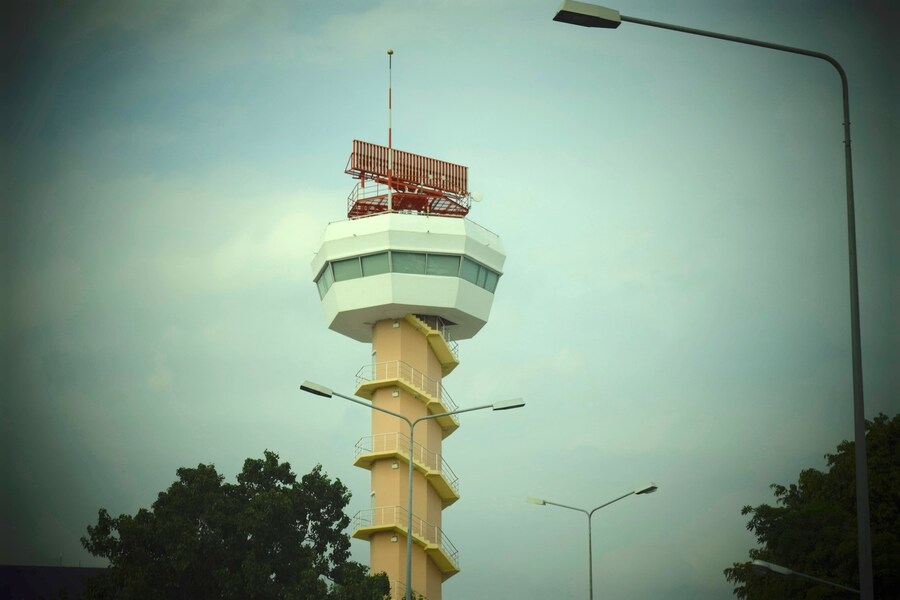As air travel continues to surge, airports worldwide are experiencing unprecedented levels of activity. Navigating bustling hubs like New York's JFK or Los Angeles' LAX can feel overwhelming, particularly when time is tight. However, consider the immense pressure faced by the architects tasked with designing these complex spaces. Their goal? To create seamless, efficient pathways that guide travelers effortlessly from entry to departure. Below, we explore the subtle yet ingenious strategies airport designers employ to ensure smooth navigation and enhance the passenger experience. Let's dive in!
Are airports becoming more than just transit hubs?

Source: George Kourounis/Unsplash
Seamless navigation systems
Airports are filled with an array of signs and digital displays: departure and arrival information, security checkpoints, terminal directions, and gate numbers are all prominently marked. While essential, this abundance of signage can sometimes lead to confusion. How often have you followed signs for TSA PreCheck, only to realize you've gone too far and need to double back?
This is where intuitive wayfinding comes into play. As the name suggests, this approach aims to guide passengers naturally, minimizing the need for conscious decision-making. It encompasses a range of elements, including color schemes, lighting, signage design, font choices, and symbols.
Intuitive wayfinding often relies on visible landmarks. In an airport, this might mean passengers can spot check-in counters immediately upon entering, view the security line from the check-in area, and see departure gates as soon as they exit the security checkpoint.
Some airports enhance navigation by incorporating features like escalators and elevated walkways, offering travelers a panoramic view of the space before they move through it. Curved hallways are another clever design choice, extending sightlines and helping passengers orient themselves more effectively.
Landside and airside: a strategic divide
While intuitive wayfinding is a powerful tool, implementing it isn't without challenges, particularly due to stringent security protocols. Airports are typically divided into 2 main zones: landside and airside, with security checkpoints serving as the boundary between them.
The landside area encompasses the airport's entrance, including drop-off zones, check-in counters, and arrival halls. Airside, on the other hand, includes everything beyond security: departure gates, retail stores, dining options, and the runways themselves. This division, mandated by the Transportation Security Administration (TSA), can hinder visibility and disrupt the flow of passengers, potentially undermining even the most thoughtful design plans.
To address this, architects often employ subtle visual cues. For instance, they may design landside areas with high ceilings that gradually slope downward as they approach security checkpoints. This architectural technique naturally directs passengers' attention toward the security area, serving as a transitional zone between the starting point and the final destination.

Source: Nopparuj Lamaikul/Unsplash
Adaptable design for growing demands
As passenger numbers rise, so does the strain on airport security. In July 2024, the TSA screened over 3 million passengers in a single day – a record-breaking figure equivalent to 35 people per second. With air travel expected to grow, security checkpoints must continually expand to accommodate increasing volumes. Architects anticipate this need by designing flexible spaces that can be easily modified. For example, offices are often placed near security areas instead of restrooms, as they can be more readily repurposed or relocated.
This focus on adaptability isn't solely about efficiency. Airports are also businesses, and retail plays a significant role in their revenue streams. Research shows that every additional 10 minutes passengers spend in security correlates with a 30% drop in their spending once they reach the terminal.
Consequently, considerable thought goes into the layout of retail spaces. One subtle but effective design tactic involves curving walkways through duty-free shops to the left, with products predominantly displayed on the right. Why? Since most people are right-handed, their gaze naturally drifts to the right, increasing the likelihood of impulse purchases.
Crafting memorable experiences
For many travelers, the only airports they remember in detail are the ones they frequent most often. Baggage claim areas, for instance, often resemble little more than functional basements, and after a long flight, passengers are usually too exhausted to appreciate thoughtful design elements.
However, some architects are reimagining airports as more than just transit hubs – they aim to create spaces that leave a lasting impression. By incorporating the principles outlined above, they're transforming airports into destinations in their own right. From intuitive navigation systems to adaptable layouts and strategic retail designs, these innovations are enhancing the travel experience. And as technology and design evolve, the possibilities for creating memorable, passenger-friendly airports are only expanding.
Streamline your journey with smart parking solutions from ParkingNearAirports.io!

Source: Miguel Carraça/Unsplash
Traveling through busy airports like JFK or LAX? Simplify your trip by booking cheap parking around JFK Airport or Los Angeles Airport overnight parking with ParkingNearAirports.io! Our platform offers airport parking reservations that are both convenient and affordable, ensuring an stress-free start to your journey. Whether you're flying for business or leisure, let us handle the logistics so you can focus on what matters most – your destination.






